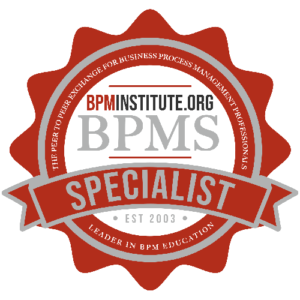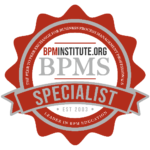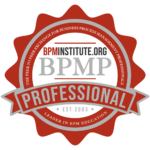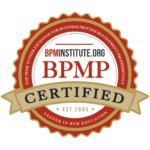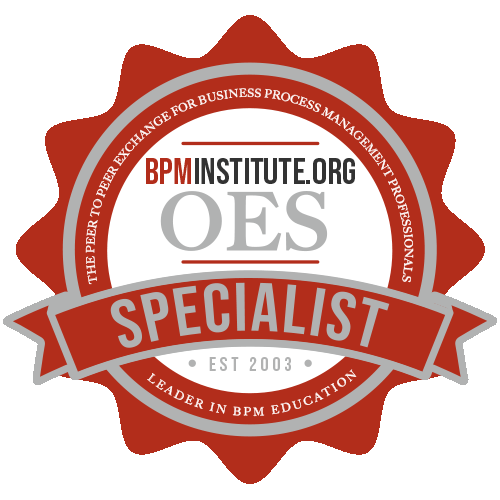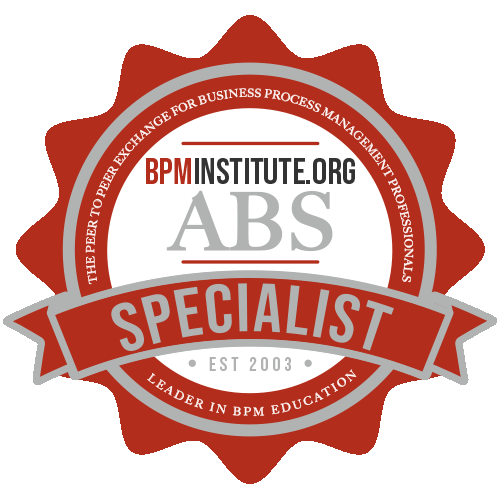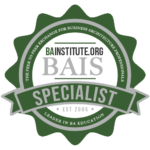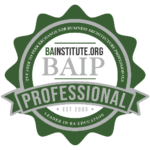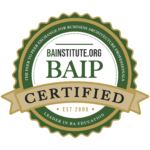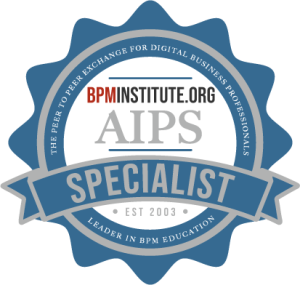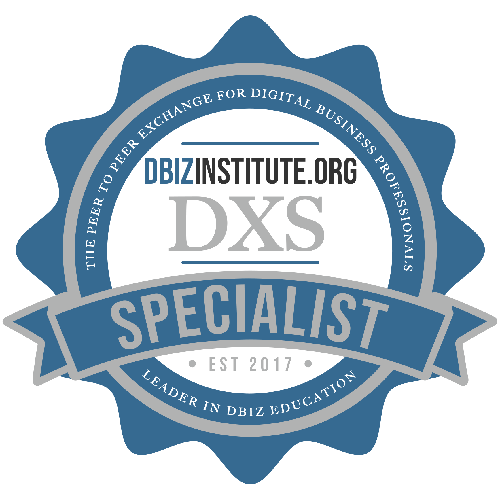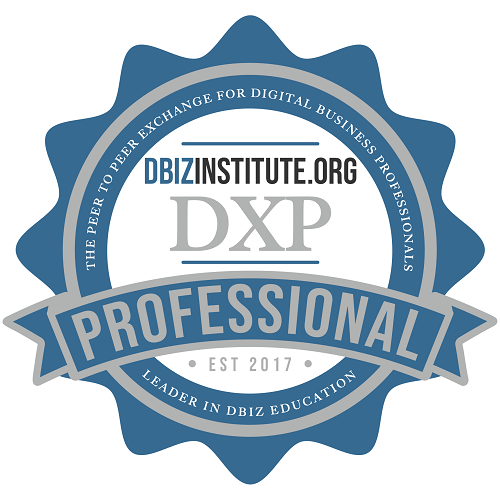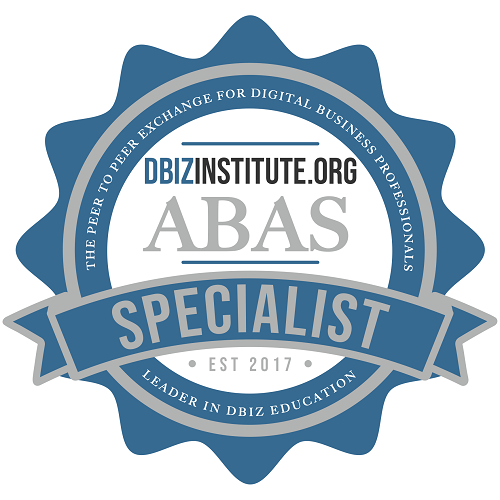Home / Resources
Resources
Discover a Wealth of BPM Knowledge and Expertise at BPMInstitute.org!

What is Scope?
“Scope” is an “everybody knows.” And that may be the biggest problem. Consider this example: After reviewing a presentation on a major initiative (tens to hundreds of millions of dollars), one senior executive proclaimed that with scope now established the need was to work specific areas. Another executive, reviewing the very same material, pointed out that it was, of course, clear that scope was still not understood!

BPM, Six Sigma and Simulation for Today’s Tough Business Environment
During the 1980s and 1990’s the use of flowcharts began to evolve. Next Business Process Management (BPM) came along to more formalize their use and combine their use with computer systems technology. Also in this timeframe, Six Sigma came into play as a means to improve processes by minimizing variability. Next, Lean six sigma evolved as a further means of reducing waste in processes.

What is the business of Business Architecture?
Business architecture is about enhancing accountability. A business architect’s job can be compared to what an accountant does for an organization. A management accountant tracks an organization’s performance against a set budget and gleans insights in the process. The accountant shares these insights for management to take action. In the same way, a business architect highlights the traceability of business and IT initiatives against a set of performance targets. The organization’s strategic goals define these success metrics or key performance indicators (KPIs).
Modernizing Legacy Applications for SOA
In my last article titled “Strategies for developing a roadmap for your SOA initiative”1 I discussed laying out a roadmap that shows how to get from the current state to the envisioned future state. One method many companies use when planning their SOA journey is to create a new presentation layer while leaving the legacy backend systems in place. This practice can be called modernizing or rejuvenating legacy systems.
Before we get too far into the discussion, let me state that the end game for SOA should not be to modernize old systems.
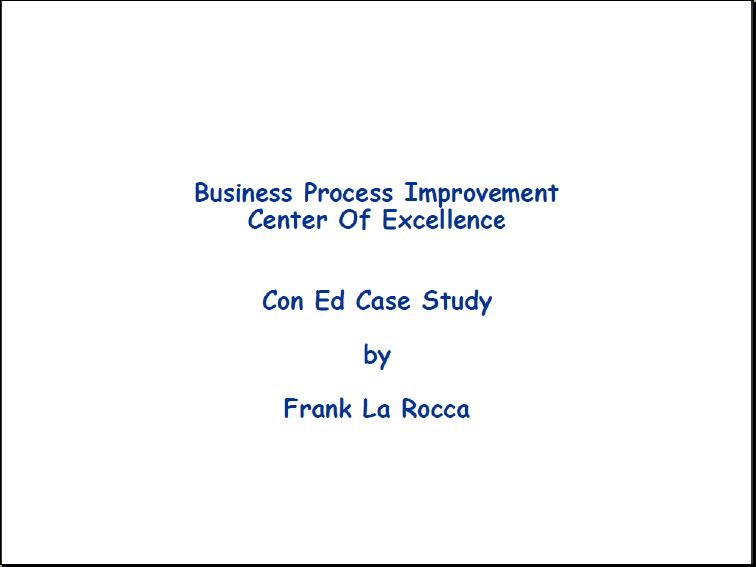
Building a World-Class BPM Center of Excellence
With approximately $33 billion in assets, Con Edison is one of the nation’s largest investor-owned energy companies serving the New York metropolitan area.
With approximately $33 billion in assets, Con Edison is one of the nation’s largest investor-owned energy companies serving the New York metropolitan area. Today Con Edison is in the process of developing a world-class business process improvement center of excellence to drive everything from building basic process model repositories to leading large-scale, cross-organizational process reengineering initiatives.
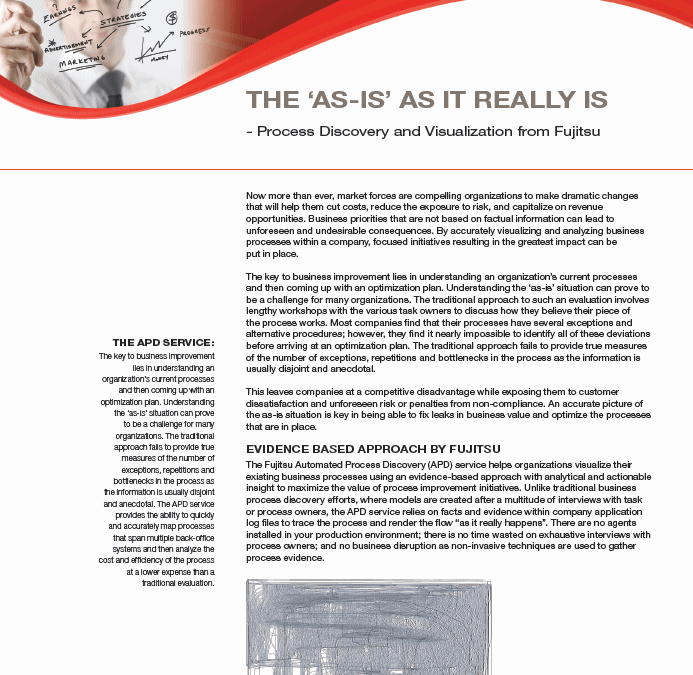
The ‘As-Is’ As It Really Is – Process Discovery and Visualization from Fujitsu
The biggest challenge with starting a process improvement initiative lies in understanding existing processes and knowing where to start. The traditional approach involves significant investment in time and resources to map out processes the outcome of which is often delayed and inaccurate. Read how Fujitsu’s Automated Process Discovery Service helps companies:
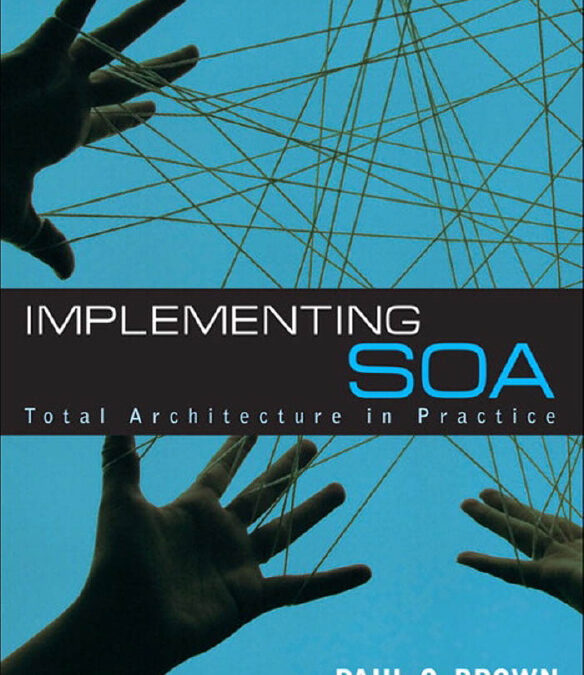
Implementing SOA: Total Architecture in Practice
If you are an architect responsible for a service-oriented architecture (SOA) in an enterprise, you face many challenges. Whether intended or not, the architecture you create defines the structure of your enterprise at many different levels, from business processes down to data storage. It defines the boundaries between organizational units as well as between business systems. Your architecture must go beyond defining services and provide practical solutions for a host of complex distributed system design problems, from orchestrating business processes to ensuring business continuity.
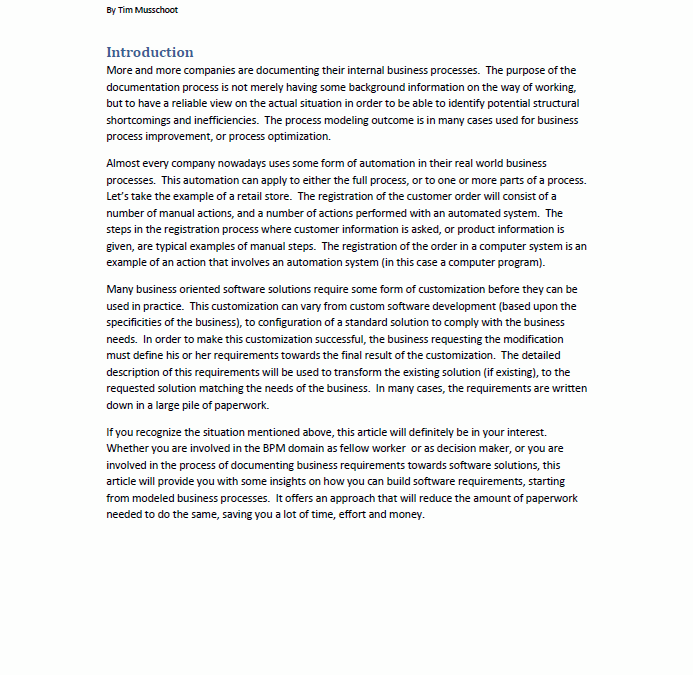
BPM – Requirements in Context
More and more companies are documenting their internal business processes. The purpose of the documentation process is not merely having some background information on the way of working, but to have a reliable view on the actual situation in order to be able to identify potential structural shortcomings and inefficiencies. The process modeling outcome is in many cases used for business process improvement, or process optimization.

BPM: Selecting the Right Tool
In my last article I talked about BPM and Software as a Service. As organizations look at SaaS capabilities of a BPM tool, there are many other features and capabilities that must also be taken into account and evaluated prior to making the final selection. Myriad of features available to be evaluated against current investments can make the BPM tool selection a bit challenging.

Business Architecture (BA) and IT Architecture Integration
The Business Architecture is an integrated component of any Enterprise Architecture (EA) framework. For example, The Open Group Architecture Framework (TOGAF) has defined a Business Architecture component1. As an architecture representing some key elements of the enterprise, it has to fit into the overall design of that enterprise. The Business Architecture is not a stand alone nor isolated component, but a fully integrated one in the context of EA.

Addressing Clinical Trial Challenges and Opportunities with BPM
In today’s market, the life sciences industry is facing a number of challenges. The challenges range from the expiration of patents, escalating cost of clinical trials and increasingly stringent new regulatory guidelines. Due to these factors, the pharmaceutical, CROs and medical device companies must re-evaluate their clinical trials processes and look for efficiencies, faster time to market and reduce costs. In addition, the companies must quickly update their processes and polices to comply with new standards.
Utilizing Metrics for Enhanced Execution
Execution, simply put, is the efficient and timely delivery of planned results. It is always vital in business but never more than in this current economic environment.
Many an organization will “talk” the execution game but they fall far short on the “walk” side of the equation. It’s almost as if it’s an alien concept. I believe the primary reason is that the execution is based upon pure energy – action that is deliberate, focused and consistent. And, unlike planning, execution does not occur in a controlled environment but instead in the real world where events are c
Formal Definition of the Process to be Automated (Second Pillar)
“If we want to enter into a scheme of automated process implementation, it is necessary to consider at least the formal definition of the activities, actors, the output and input documents for each activity, the integration levels, the routing rules, etc. of the process to be automated. Formal definition refers to the elaboration of basic documentation for the initial phase of process automation according to the chosen methodology.

The Process Professional: An Independent Review of Savvion’s Process Modeler
In the second of a series evaluating tools for business practioners, we look at the Process Modeler by Savvion. As with my previous evaluation, the point of view is from a business perspective rather than that of an IT professional. My criteria are ease of use, a short learning curve, and good collaboration features.

BDM, Governance, and a Center of Excellence
As we continue to find more powerful tools and approaches available to us in our efforts to employ Business Decision Management, one last roadblock remains on our quest for agility. Ourselves. We already know effective BDM will be facilitated by a new kind of resource – a hybrid business/technical person that knows the business well and is able to codify that knowledge in a structured fashion. But the organization itself must enable – not inhibit – the collaboration we seek.
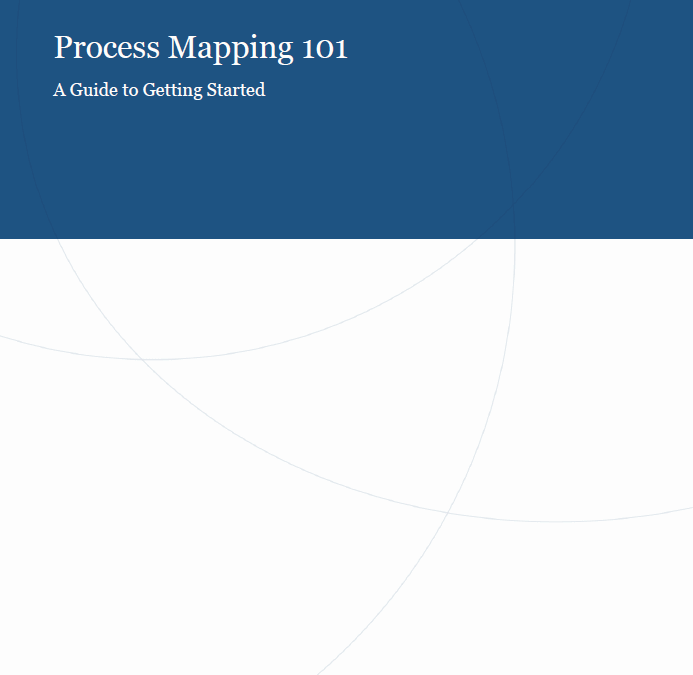
Process Mapping 101: A Guide to Getting Started
Before starting, it is important to understand process mapping’s place in the larger context of business process improvement. Improving your process typically starts with documenting how it works today, what we call the “as-is” process. The mapping of the as-is process can be divided into two phases: the Discovery Map and the Process Diagram.
It is the Discovery Map that we will focus on in this guide: who needs to be involved, what information goes into it, how to conduct the mapping session, and how to communicate your progress to stakeholders.

Bringing BPM and SOA Together for Maximum Business Value
The combination of Business Process Management (BPM) and Service-Oriented Architecture (SOA) has been the subject of a great many magazine column inches and conversations in the past couple of years. Most commonly, the relationship is seen primarily as one of technical complements – where BPM is seen as a way to make it easier to create composite applications from services, and SOA is seen as a way to make it easier to integrate automated processes with existing applications, systems and data sources.
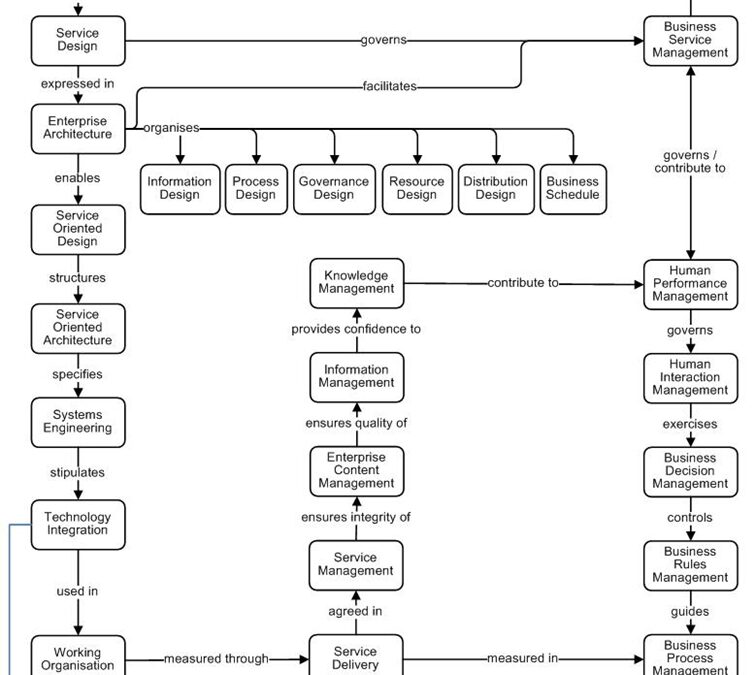
Process-oriented Systems Paradigm for the Process Age
In the previous article “Integrated Business Management in the Process Age”, I discussed the concepts that will shape businesses in the Process Age. In this article I will discuss how process-oriented concepts and systems engineering practices can be used in a process-oriented engineering methodology.
-o00o-
In the previous article “Integrated Business Management in the Process Age”, I discussed the concepts that will shape businesses in the Process Age. In this article I will discuss how process-oriented concepts and systems engineering practices can be used in a process-oriented engineering methodology.
-o00o-

BPMS Watch: Engaging the Business in BPM
As BPM begins to expand beyond isolated projects to mainstream programs at the division or enterprise level, there is a need to engage a far greater number of business people in the effort. That’s not easy, and achieving it is going to require significant change in the way BPM is practiced.
The most important role for business is probably documenting current-state business processes and analyzing them for possible improvement. But conventional practices in this area are inefficient and inherently small-scale.

The Role of the Business Architect in Organizational Change Management
As a Business Architect, I look at the business with the same eye for structure that I had when I worked in IT. So the first time a client asked me to develop a formal Organizational Change Management program for them, my thought was “What does a Business Architect know about organizational change management?” Not being one to back away from a challenge, I immediately set out to answer my own question.
